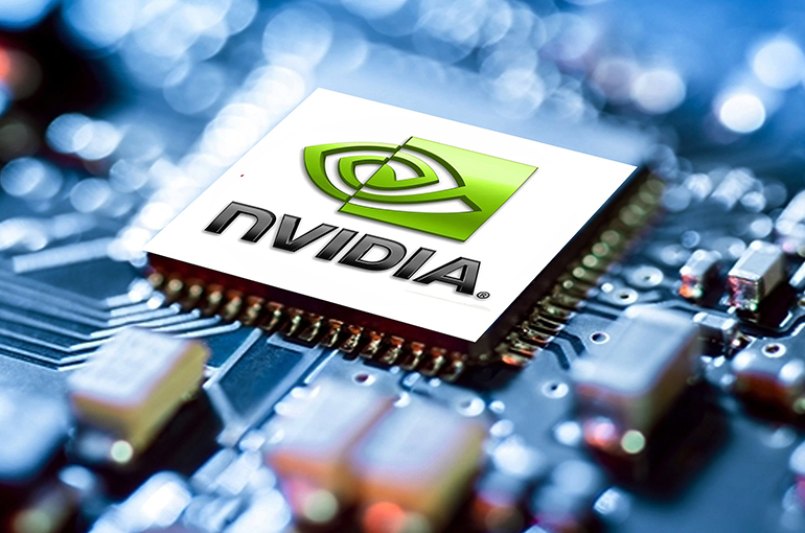Thanks to positive expectations for the development of artificial intelligence (AI), Nvidia’s stock price has risen to all-time highs in recent weeks.
The chipmaker, which is the industry leader in producing the GPUs that are commonly used in artificial intelligence, closed above $2 trillion on Friday for the first time, placing it third in terms of market value behind Apple and Microsoft.
It’s unlikely that rivals will be able to close the gap anytime soon given the broad “moat” Nvidia has created through years of investment and the creation of its own popular software ecosystem, according to analysts.
According to Bernstein Research senior analyst Stacy Rasgon, “I think Nvidia is the team to lose, and they’re not showing any signs of losing it right now,” she told The Hill.
For many years, Nvidia has been creating GPUs. According to Tianqi Chen, an assistant professor in Carnegie Mellon’s Machine Learning Department, the GPU community started using the chips ten years ago after a discovery that changed the chips’ original purpose from video games.
One of the “godfathers” of artificial intelligence, computer scientist Geoffrey Hinton, discovered that GPUs were more effective at the kind of large-scale computation needed for machine learning, which sparked a “deep learning revolution,” according to Chen.
“The machine learning community started to embrace GPU computing,” Chen said. “As of today, right, almost all the AI models that run deep neural learning networks … a lot of them, even a majority, runs on GPU.”
After observing this trend, Nvidia started developing machine learning libraries for its CUDA software environment, according to Rasgon.
As Nvidia concentrated on advancing its AI capabilities, Advanced Micro Devices (AMD), its main rival in the GPU industry, faced financial difficulties.
“It’s only in recent years that AMD and even others have had the resources in place to start investing in data center and AI with GPUs,” Rasgon said. “But by then, Nvidia’s had like a 10-year lead.”
“A lot of it comes down to this: They had an early recognition that this was going to be important. They started dedicating resources to develop products, both hardware and software, to go toward this. They had competitors that were either not interested in doing this or not capable of doing it. And they never lost faith,” he added.
Nvidia has a substantial advantage over other GPU manufacturers thanks to its own software ecosystem.
“Nvidia took an early lead in AI GPU hardware, but more important, developed a proprietary software platform, Cuda, and these tools allow AI developers to build their models with Nvidia,” Morningstar equity strategist Brian Colello said in a recent report.
“We believe Nvidia not only has a hardware lead, but benefits from high customer switching costs around Cuda, making it unlikely for another GPU vendor to emerge as a leader in AI training.”
Rasgon pointed out that a developer would need to completely redo their code if they tried to switch to AMD or Intel components.
“It’s an enormous undertaking,” he said. “And time is money, right? I mean, you want to get to market with this stuff as quickly as possible. It’s much easier just if you’ve developed everything over the last 10 years on Nvidia parts to just keep using them.”
After the introduction of OpenAI’s widely used ChatGPT tool, which triggered intense rivalry among large tech companies to develop and distribute their own generative AI models, Nvidia has started to see a return on its GPU investment over the past year.
In May 2023, the chipmaker’s market value reached $1 trillion for the first time. Nvidia’s stock has increased by 77 percent since the year’s beginning, and the company has continued to rise in recent months.
Late last month, Nvidia first passed the $2 trillion threshold after releasing impressive fourth-quarter earnings that above forecasts. It broke Wall Street’s record for the biggest one-day gain when it added $277 billion in market value in a single day, briefly pushing it over $2 trillion.
Last week, Nvidia’s stock rose sharply once more, closing above $2 trillion for the first time following Dell’s release of fourth-quarter earnings that beat expectations. Reuters claims that Nvidia provides GPUs for Dell servers.
“Accelerated computing and generative AI have hit the tipping point. Demand is surging worldwide across companies, industries and nations,” Jensen Huang, the founder and CEO of Nvidia, said in the company’s latest earnings report.
Last year, the Biden administration’s limits on the sale of sophisticated processors in late 2022 caused a “significant” decline in the company’s data center revenue in China.
In order to get around the limits, Nvidia created two new chips with less features, but in October 2023 the administration also took action against these chips because to worries that American technology might be used to bolster the Chinese military.
At least for the time being, the Santa Clara, California-based company’s domination seems to be virtually unstoppable.
Nvidia’s competitors AMD and Intel don’t seem likely to overtake it, and while internal solutions from Google, Microsoft, Amazon, and Meta would be useful for some tasks, they probably wouldn’t have the same flexibility as GPUs, according to Rasgon.
Chen said that if businesses make significant investments in the software component, alternative chips might be able to capture a small portion of the market. He did, however, add that he didn’t think Nvidia would lose its position as the industry leader.
“In the long run, we expect tech titans to strive to find second-sources or in-house solutions to diversify away from Nvidia in AI, but most likely, these efforts will chip away at, but not supplant, Nvidia’s AI dominance,” Morningstar’s Colello added.


 Technology4 weeks ago
Technology4 weeks ago
 Technology4 weeks ago
Technology4 weeks ago
 Science4 weeks ago
Science4 weeks ago
 Business4 weeks ago
Business4 weeks ago
 Business4 weeks ago
Business4 weeks ago
 Business4 weeks ago
Business4 weeks ago
 Uncategorized4 weeks ago
Uncategorized4 weeks ago
 Business3 weeks ago
Business3 weeks ago












